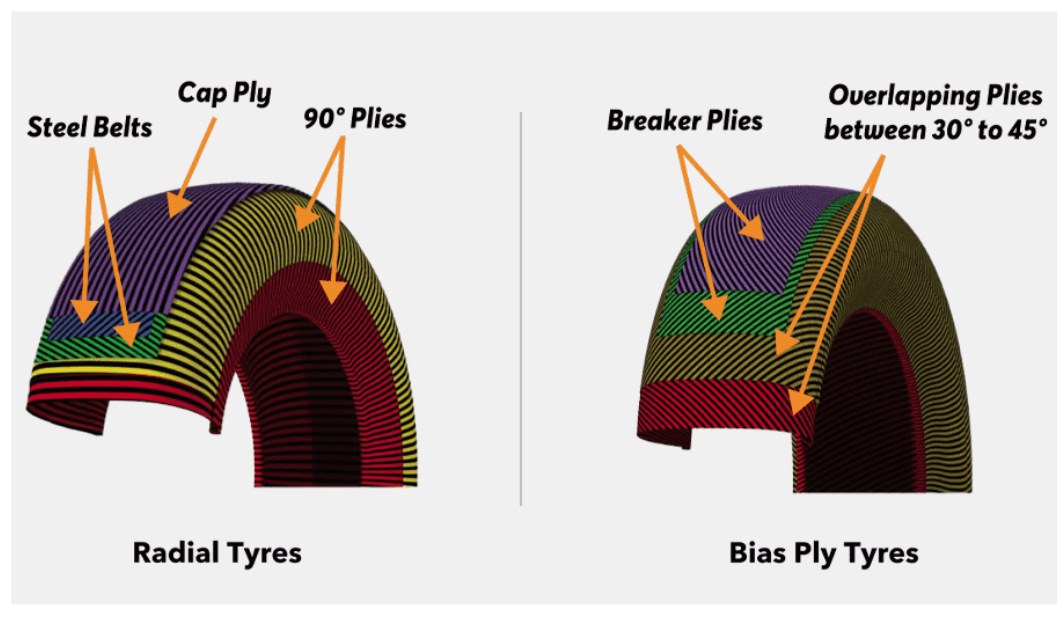Differences Between Radial and Bias Tyre

When you drive a car, you hardly notice the in-depth properties of the tyres attached to the passenger car. There are two main types of tyres fitted into a passenger car: Radial and Bias Ply Tyres. These majorly differ based on their construction and uses.
Find out below the difference between radial and bias tyres and everything you need to know about them!

Table of Contents

What is a Radial Tyre?
These tyres are the most commonly found in passenger cars. As the name suggests, the cord plies found in these tyres are inclined to 90° to the direction of travel. This radial angle of cord plies provides many advantages to the vehicle, such as improved grip and better control.
The threads of the cord in these tyres do not intersect. These are arranged radially or placed parallel to each other. You can get both tube and tubeless tyres in this category.
What is a Bias Tyre?
These types of tyres are characterised by a spaceless (airtight) inner tube, symmetrical sidewall build, and crossed plies. The sidewall of these tyres is aligned systematically with several layers of rubber-fabric casing. Unlike radial tyres, the treads do not run parallel to each other. You will find these tyres generally in old vehicles.
Difference Between Radial and Bias Tyre
Both the tyres have the same purpose. However, they have major significant differences. Some of them are mentioned below:
Advantages of Radial and Bias Ply Tyres
Disadvantages of Radial and Bias Ply Tyres
How to Check if You Have a Bias or Radial Tyre?
The main difference between radial and bias tyres is their sidewall build. The sidewall in the bias ply tyre makes angles with each other, often bisecting and crossing each other. A unique identification of these tyres is the letters ‘Bias’ or ‘Bias Ply’ embossed on these tyres.
On the contrary, the sidewall in radial tyres is built of steel cord plies aligned radially to the centreline of these tyres. It is recommended to look for a 90° angle of the sidewall. The alphabets ‘Radial’ or ‘Radial Ply’ are written on these tyres to identify them easily.
Therefore, the final choice lies in your hands. Generally, radial tyres offer better benefits and are an ideal option. But if your major car usage is for driving on rough road surfaces or you have an old vehicle, bias ply tyres are the best option.
















